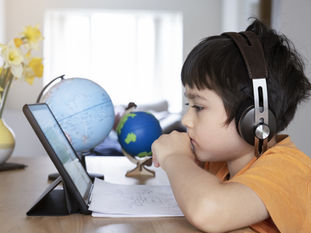The Spark

Pause, Reflect & Respond... but, my child spilled juice and AHHHHHH!!!
Oct 3, 2024
3 min read
0
10
0
PRR - Pause, Reflect & Respond is easier said than done, but it can be done incrementally. Let me (Phebe) start with an example before breaking it down for you.
My 7-year old daughter has had multiple dining table and kitchen accidents through the years. She has spilled juice, milk , water, you name it - because she’s a child who is trying to show that she is able. (cue applause for self-help skills!) First few times it happened, I definitely reacted by jumping up and might have yelled a bit too loudly, which obviously did not end well for everyone. Slowly becoming more conscious, I would still speak too loudly when accidents happened even if I was trying to say, “Accidents happen, let’s clean this up together.” Then eventually, maybe after half a dozen or so accidents, I could finally handle my emotions and respond by saying the same words in a much calmer and controlled manner.

As parents, we often find ourselves in situations where we know the right thing to do, but in the heat of the moment, we might say something that triggers our children, and in turn we feel set off and... you know the rest. Here are three steps to help remind ourselves to slow down before reacting:
Step 1: Pause and Breathe
When you feel your emotions rising, take a moment to pause and breathe deeply. This simple act can help calm your mind and body, giving you a chance to think before you speak.
One effective technique is the 4-7-8 Breathing Exercise:
Inhale quietly through your nose for a count of 4.
Hold your breath for a count of 7.
Exhale completely through your mouth, making a whoosh sound, for a count of 8.
Repeat this cycle 2-3 times. Even if you only do it once, it’s better than none!
Step 2: Reflect on Your Feelings
You’ll definitely want to react immediately, but give yourself that extra minute to identify what you’re feeling and why. Think about whether you’re frustrated because your child didn’t listen, or are you worried about their safety? Understanding your emotions can help you respond more thoughtfully.
Whether you’re a full-time or working parent, try to reflect on your feelings throughout the day whether it’s interactions with your child or colleagues - it will help you become more prepared to handle your emotions when you feel triggered by your child when you’re home.
Step 3: Choose Your Words Carefully
Once you’ve paused and reflected, choose your words carefully. Sometimes, in the heat of things, it’s hard to find the right words when all that’s going through your head might be @#R(&#(*!(* (yes, we’ve all had MANY of those moments!) If you need more time to craft your words, go ahead and tell your child, “I am feeling _________, I need a minute before I can talk to you calmly and honestly.” Aim to communicate your feelings without blaming or shaming your child.
One tip I want to share with parents, whether you're a full-time or working parent, is to find that 5-minute pocket of time in the early evenings before going home after work. If you're a full-time parent, you'll have to rely on your spouse to relieve you once he/she is home. One of my daily routines after work is just walking through my neighborhood supermarket even if I’m not there to pick up anything. It’s my 5-10 minutes of “me-time” and helps me to transition from work mode to home mode. I also practice a few 4-7-8 breathing cycles while I'm there. I hope you find your 5-minute pocket of time!

